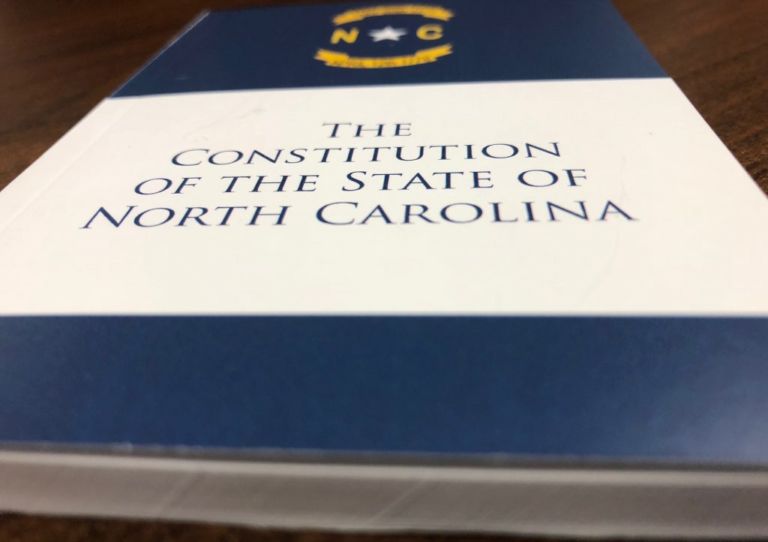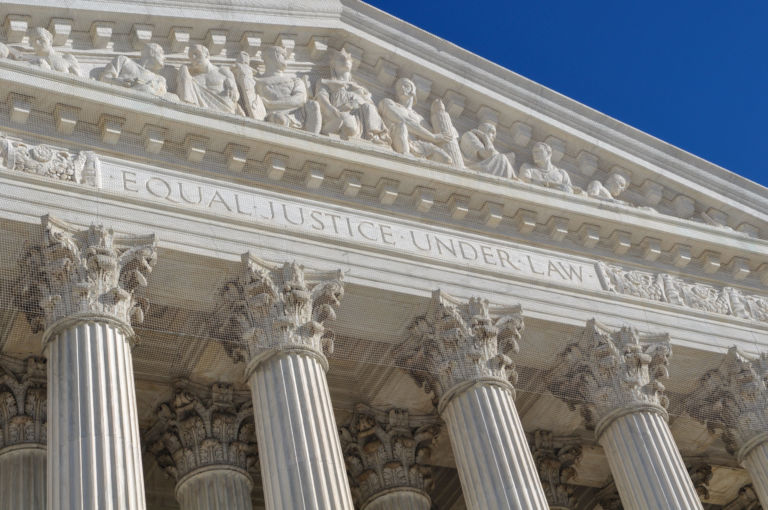What defines an activist court? Is it one that establishes new rules by expanding and stretching the constitution to write a perceived wrong, or is it a court that looks to readdress prior rulings and potentially establish precedents more grounded in the constitution? Traditionally the former is what many would consider to be an activist court. Still, a conscious effort is being made to change this definition to the latter and attach it to the new majority on the supreme court.
In January, the state supreme court moved from a 4-3 Democratic to a 5-2 Republican majority. Using an unusual procedure, the prior majority expedited two key election cases before the new court came in, a redistricting case and a case regarding the state’s 2018 Voter ID law. However, now that the Democratic justices are in the minority, they are disgruntled that the court would dare to rehear the rushed decision of these two cases utilizing rule 31 of appellate procedure.
Justice Earls, Roy Cooper, and other left-wing actors have tried to frame this rehearing of cases as the new Republican court overstepping its power and authority. However, they are well within their right to rehear these cases, especially when you look at the flaws in these rulings they are rehearing. As I’ve established before, the prior court presumed legislators’ intent in its ruling against the voter ID law based on a prior case. This breaks from judicial precedent by not only flipping the burden of evidence onto the defendants but also bringing in a prior piece of legislation to justify their bias against the current voter ID law.
The prior redistricting ruling has a myriad of flaws. The one being questioned directly is the court’s decision on what is and is not a political gerrymander. Because the court’s original ruling is vague with no clear guidelines, it allows the subjective determination of what is and is not a political gerrymander.
There are examples of the prior court overstepping the judiciary’s role and establishing new authorities for itself over the last two years. The best example comes from the Leandro ruling, where the court said that the power of the purse does not lie solely with the legislature and that the court may appropriate funds directly. This breaks from the precedent reestablished not three years ago in the case of Cooper v. Berger. The court, in that case, quoted State v. Davis, which affirmed that the appropriations clause of the North Carolina Constitution “states in language no man can misunderstand that the legislative power is supreme over the public purse.”
When the new court was quick to correct this clear usurpation of constitutional authority, Justice Earls was just as quick to lament this as breaking from established precedent and this new court overstepping its bounds. Before Justice Earl became a North Carolina Supreme Court Justice, she was the Executive Director and activist lawyer for the Southern Coalition for Social Justice (SCSJ). SCSJ has fought the Republican legislature over voter id and redistricting cases. While Earls may have turned the SCSJ over to new hands to take up her judicial robes, her mindset has not changed, and she continues to act more akin to an activist rather than a judge accountable to the constitution.
While I am glad to see the court addressing the blatant judicial overreach in the prior court’s redistricting and voter ID cases, I remain cautious of judicial overreach going the other way. While it may be tempting to try and correct the prior court’s mistakes quickly, this court should show the restraint that is becoming of the court. The court must reestablish judicial restraint and return to following the constitution rather than politics.


